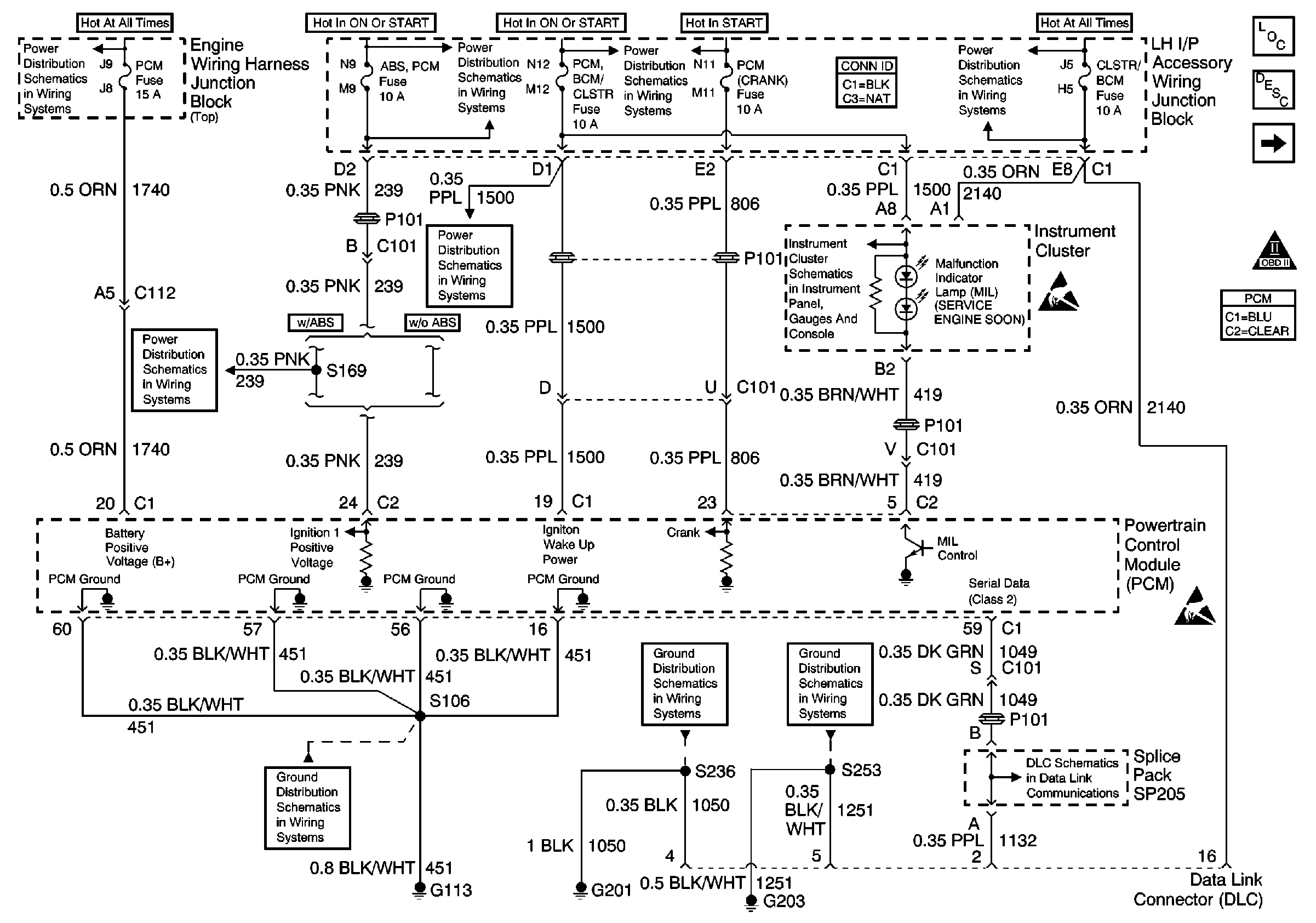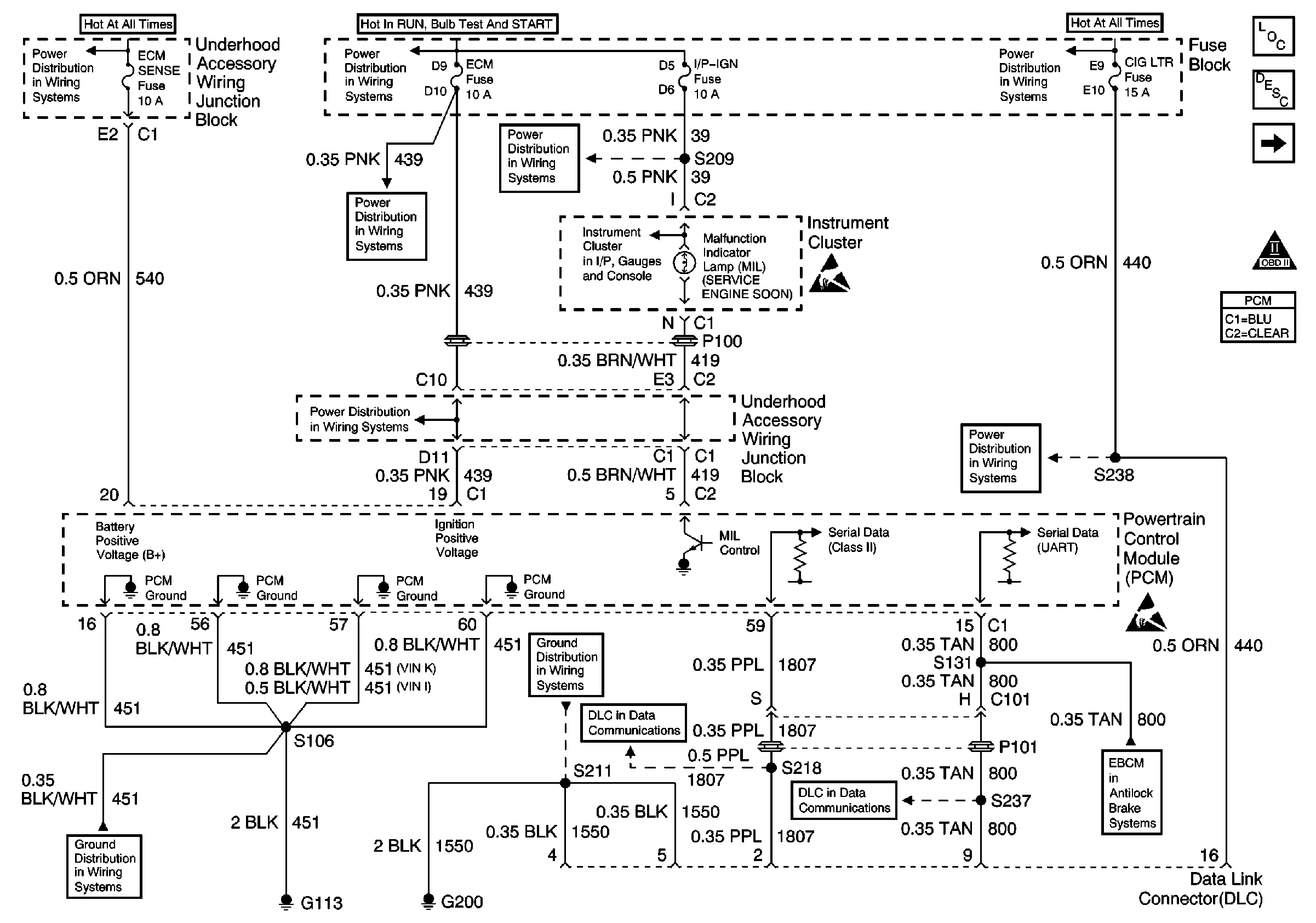Important Preliminary Checks Before Starting
Before you use the symptom tables, perform and verify all of the following
items:
| • | Ensure that no DTCs are stored. |
| • | Ensure that the scan tool data is within the normal operating
range. Refer to
Scan Tool Data List
. |
| • | Verify the customer complaint. |
| • | Perform the Symptoms Check in this section. |
Locate the correct symptom in the list at the end of this section. Follow
the procedures in the appropriate diagnostic table.
Symptoms Check
The symptom procedures call for a careful inspection. Following these
procedures can help to correct a problem without further tests, and can
save valuable time. This inspection should include the following areas:
| • | Inspect the PCM grounds for being clean, tight, and in their
proper location. Refer to The PCM grounds, refer to
Power, Grounds, MIL, Serial Data

, |
| • | Inspect vacuum hoses for the following conditions, as shown
on Vehicle Emission Control Information label: |
| - | Refer to
Power, Ground, MIL and Data Link

. |
| • | Inspect the air intake ducts for the following conditions: |
| • | Inspect for air leaks at the following areas: |
| - | The throttle body mounting area |
| - | The intake manifold sealing surfaces |
| • | Inspect the wiring harness for the following conditions: |
| • | Inspect for sensors or components that are loose, damaged or missing. |
Use the following tables when you diagnose a symptom complaint:


